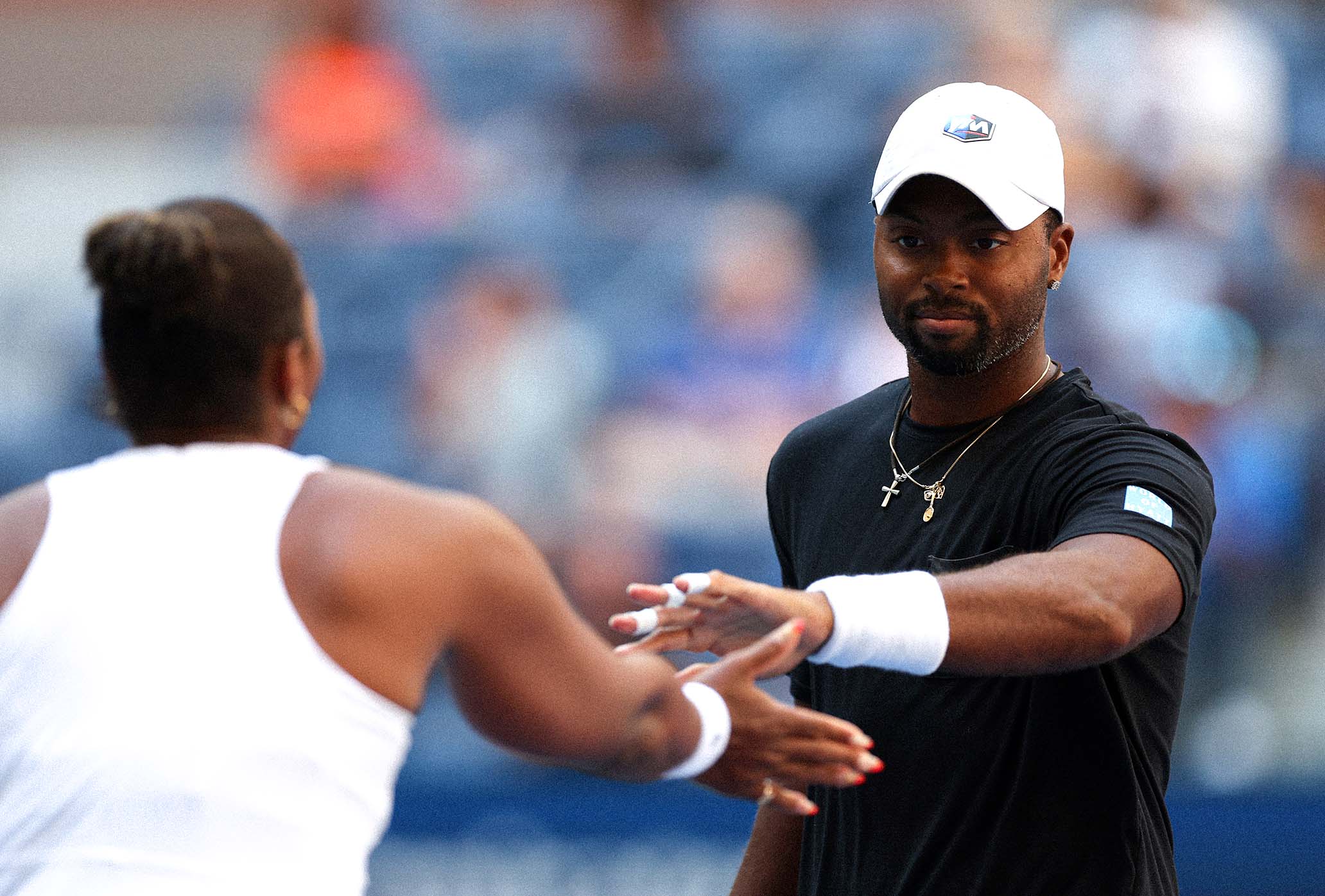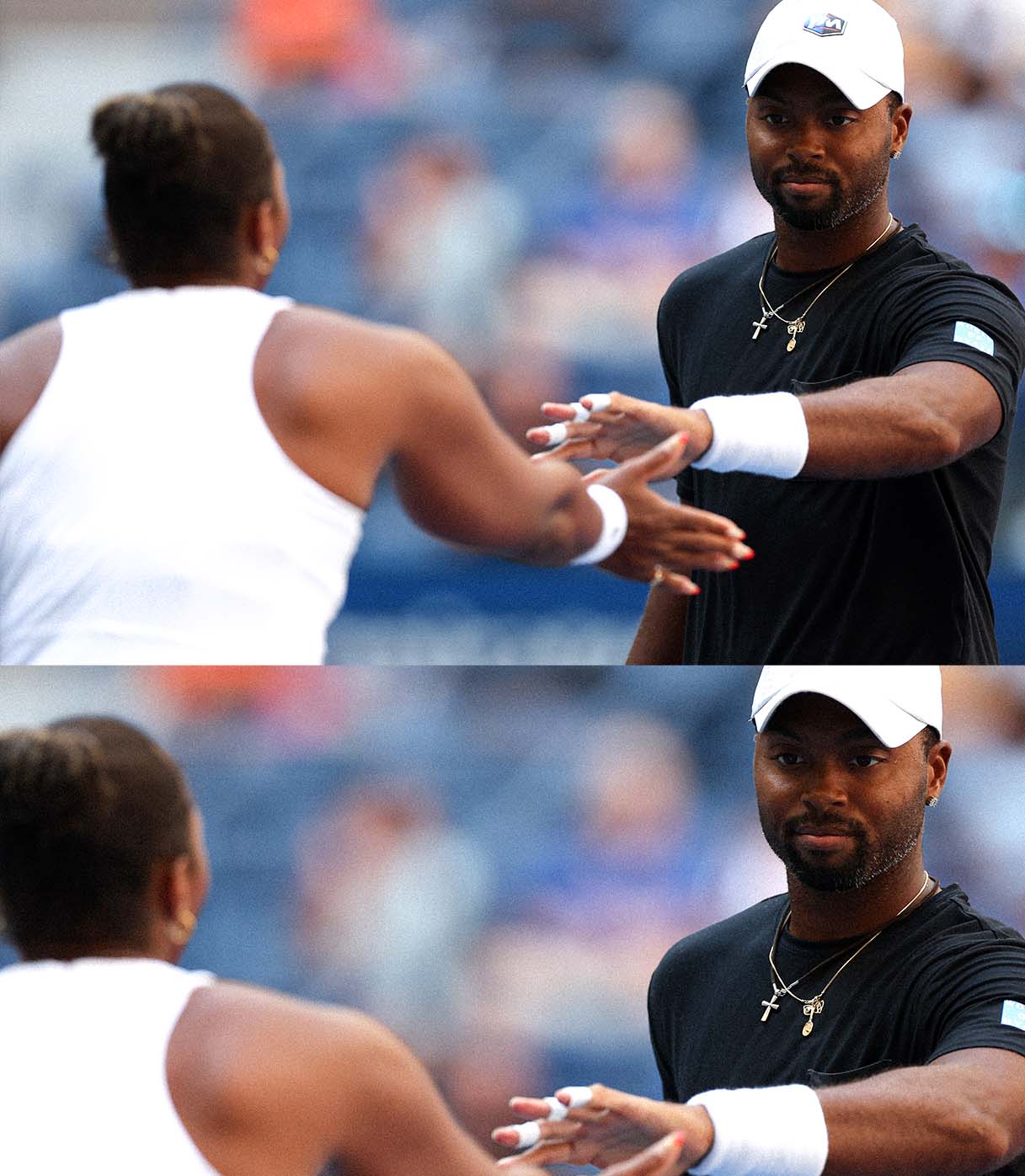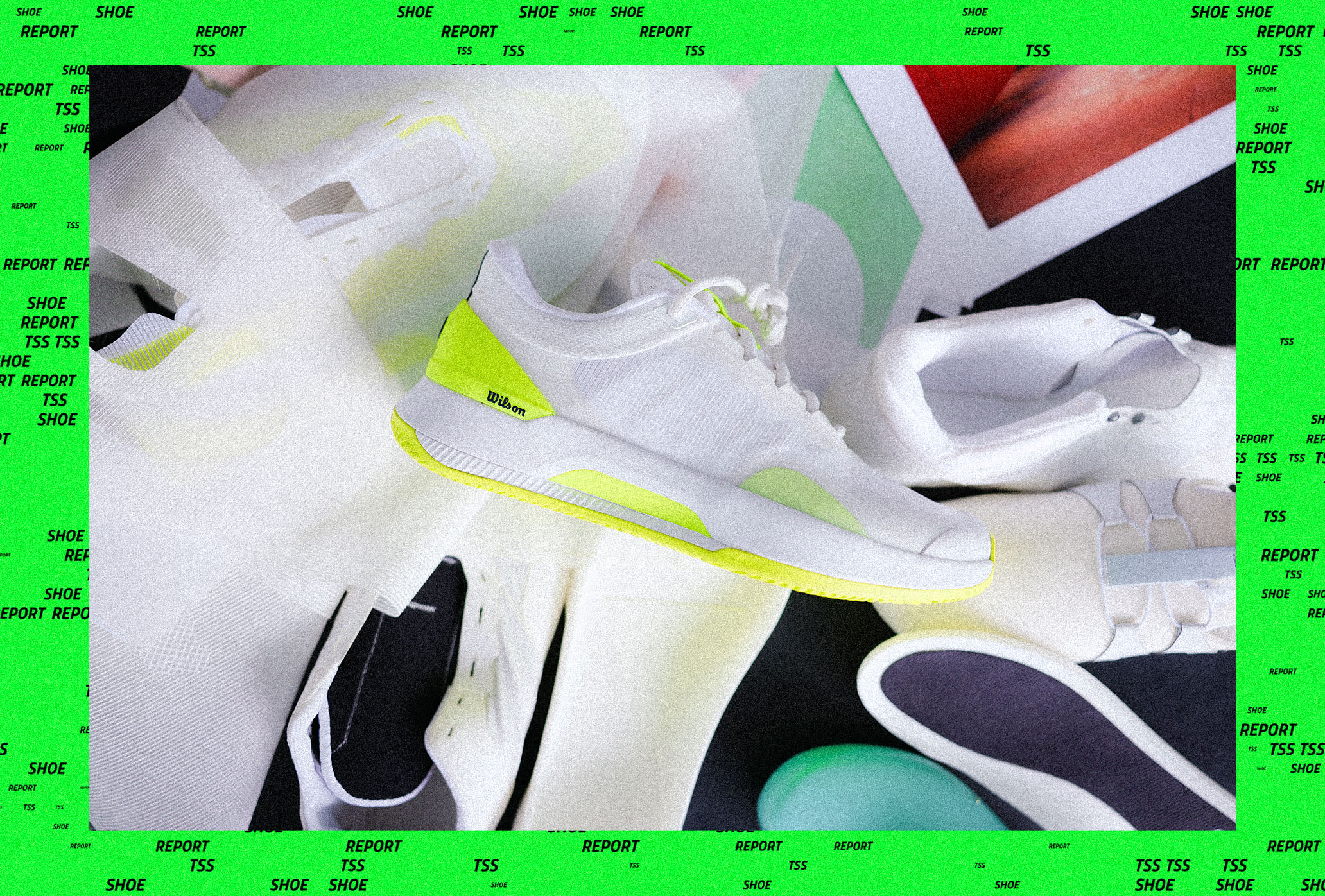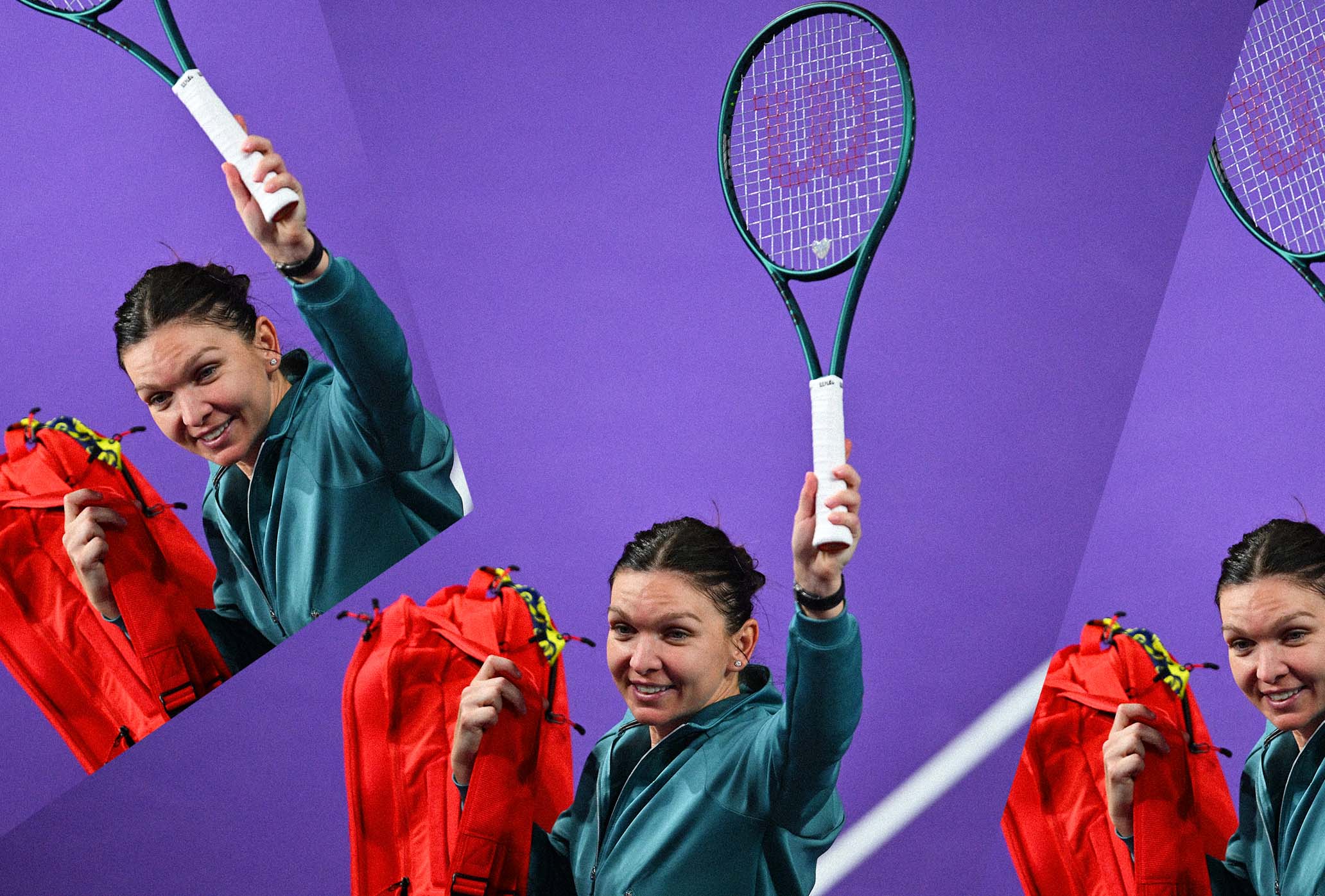Mixed Results
Mixed Results
The U.S. Open shakes up the mixed doubles format.
The U.S. Open shakes up the mixed doubles format.
By Ben RothenbergFebruary 13, 2025

Taylor Townsend and Donald Young, runners up in the US Open mixed doubles draw in 2024, the last of its kind. // Getty

Taylor Townsend and Donald Young, runners up in the US Open mixed doubles draw in 2024, the last of its kind. // Getty
All sorts of Olympic sports—archery, curling, judo, sailing, shooting, swimming, track, and more—have contrived newfangled mixed formats in recent years because of how dynamic and appealing mixed-gender competitions are considered to be. Tennis, meanwhile, was invented with mixed doubles already at the forefront: One of my favorite factoids is that when Major Walter Clopton Wingfield published the first set of lawn tennis rules back in 1873, the lone illustration in the rule book depicted a mixed doubles match.
But instead of adding new trophies, mixed doubles has been atrophying.
It’s evident what makes the public care about mixed doubles: the participation of singles stars. It’s that simple. There have been two spotlight moments for mixed doubles in the past decade, and both involved Serena Williams and a member of the Big 4: when she played against Roger Federer in the 2019 Hopman Cup, and when she partnered with Andy Murray to play the mixed at Wimbledon later that same year.
But those were unicorn events, and as singles stars opt out over and over at the majors, doubles—both same-gender and mixed doubles—has steadily become the domain of an increasingly separate population of players: doubles specialists. And doubles specialists have consistently not been able to generate crowds or attention or value for the biggest tournaments.
The U.S. Open, to its credit, recognized this reality. Rather than mindlessly running another irrelevant, dead-weight mixed doubles competition this year, the U.S. Open believed enough in the potential of mixed doubles to breathe life into the format with a radical revamp, as they officially announced Tuesday after weeks of leaks:
“TENNIS’ BIGGEST STARS WILL HAVE AN OPPORTUNITY TO COMPETE FOR A COVETED MIXED DOUBLES GRAND SLAM TITLE, A MULTI-MILLION DOLLAR PURSE AND A $1 MILLION PRIZE.”
Instead of taking place during the final week of the tournament, when all the biggest stars are laser-focused on late-round singles matches (or already on flights home if they’ve lost), the mixed doubles competition will be an amuse-bouche before the main draw, taking place on the Tuesday and Wednesday before the tournament. Instead of being shunted to the outer courts, mixed doubles matches will be held exclusively at Arthur Ashe Stadium and Louis Armstrong Stadium. And instead of mixed doubles champions being paid peanuts, there will be $1 million for the winning pair, and an overall prize purse in the millions.
To make participation less daunting on the eve of a major, matches will be streamlined into best-of-three-set matches with short sets to four games, no-ad scoring, tiebreakers at 4–all, and a 10-point match tiebreak in lieu of a third set. The final will be a more standard-length mixed doubles match, a best-of-three-set match with sets to six games, no-ad scoring, tiebreakers at 6–all, and a 10-point match tiebreaker in lieu of a third set.
The biggest change: Instead of being contested almost entirely by doubles specialists who haven’t captured the public’s attention or imagination in previous editions, the draw will largely be filled with singles stars. The U.S. Open mixed doubles field will be made up of 16 pairs, with eight entries based on singles rankings only—rather than singles or doubles rankings as it was previously—and the other eight entries being wild-card teams.
Taylor Fritz and Jessica Pegula, the two runners-up in the U.S. Open singles draws last year, both indicated a desire to participate in the U.S. Open’s press release on the new reformatting.
The complaints from traditionalists—and doubles specialists outraged at being shut out—have been predictable and, I think, easily shot down. Most prominently, the reigning U.S. Open mixed doubles champion pair of Andrea Vavassori and Sara Errani put out a statement calling the new format a “pseudo-exhibition.” But surely mixed doubles at majors, by not giving ranking points, already met the most common definition of an exhibition event? Although if mixed doubles was an exhibition event before, admittedly, it was a bad one: Exhibition events are designed to draw crowds and sell tickets to see stars, and those star players collect big paychecks for participating; mixed doubles at majors hasn’t met any of those appealing criteria for a long time. If mixed doubles has become a bona fide “exhibition” event with this change, that’s an upgrade from the afterthought it was before.
Vavassori and Errani also cited “tradition and history” as reasons for keeping things the old way. But the meaningful “tradition” of mixed doubles, historically, wasn’t to assure that no one gave a shit about it, which is all a lack of change would accomplish with the current trajectory of the category. To be more blunt, the idea that a mixed doubles title was something worthy of the “Grand Slam” label in its recent iterations has seemed increasingly hollow as the mixed doubles fields grew weaker and more anonymous, and as the pay gulf became so stark as a result.
There’s been a lot of pity for doubles specialists on social media since this announcement—much of it from the doubles specialists themselves—and I don’t think that will prove helpful to their cause. What would be helpful, I think, is for this to be a wake-up call. If this comes off as harsh toward doubles specialists, it’s meant to: I think they’ve had their chance to prove themselves as attractions for years now—especially with every doubles match now fully produced and available to stream—and they’ve consistently shown that they cannot. The idea that the U.S. Open should maintain a system of handouts or charity for doubles specialists rather than revamp the mixed doubles event into something worthy of being showcased at a Grand Slam is unconvincing, especially because the prize money for the event that they’re whining about missing out on was so paltry compared with the more-than-quadrupled amount the tournament thinks mixed doubles can be worth now.
My hope is that the U.S. Open deciding to make mixed doubles into something that people will watch and care about—and how they determined the best way to do that—will light a fire under the complacency of doubles specialists about their places in the business model of the sport, if they care enough to fight for it. And even without learning to win singles matches, there’s still a way into the mixed doubles draw: They can learn to become entertaining, compelling, and popular enough in the next few months to convince U.S. Open organizers that they should be awarded some of those wild-card entry spots.
If they can do that, the sport will be stronger for it, and everyone will win big.
An expanded version of this story can be found at Bounces, Ben Rothenberg’s new Substack newsletter about the world of professional tennis, which you can subscribe to here.


The Hopper
—CLAY Tennis on Beatriz Haddad Maia’s US Open run.
—Giri on Iga Swiatek’s loss to Jess Pegula.
—Jon Wertheim’s mailbag is full this week.
—Sara Errani and Andrea Vavasori have won the US Open mixed doubles.
—Tim Newcomb on Taylor Fritz and Asics.

PURE, ORIGINAL TENNIS — SIGN UP!
RECOMMENDED
Wilson Drops Marta Kostyuk’s New Intrigue
SNEAKERS — WILSON
Dynamism & Struggle
RETIREMENT
Nike’s Vapor Franchise Expands to Start 2025
SNEAKERS — NIKE VAPOR 12


